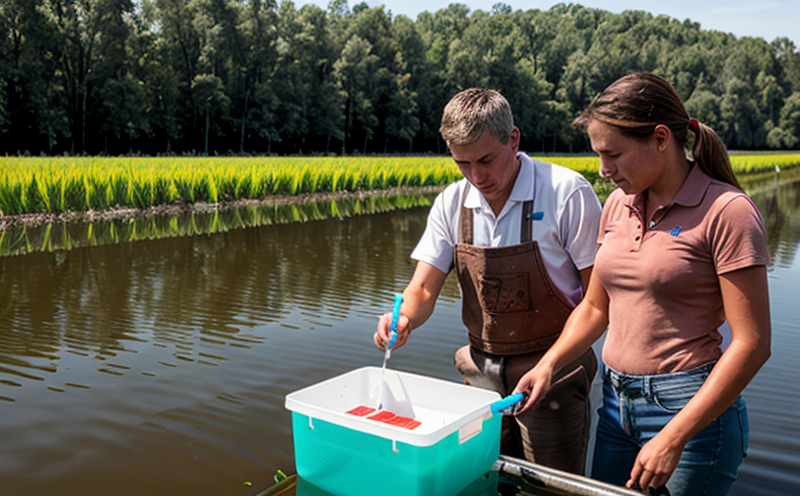Nickel Content Testing in Agricultural Water
The testing of nickel content in agricultural water is a critical aspect of ensuring both environmental and crop health. Nickel plays a dual role, being essential for plant growth but potentially harmful at elevated levels. Understanding the precise nickel content in irrigation or runoff water helps farmers make informed decisions about their practices to prevent contamination of soil and water resources.
In agriculture, nickel can be introduced into water systems from various sources such as fertilizers, manure, and industrial runoff. Excessive nickel can lead to issues like phytotoxicity, which adversely affects plant growth, yield, and quality. Therefore, accurate measurement is essential for maintaining sustainable agricultural practices.
This testing service involves several key steps: sample collection, preparation, analysis using appropriate instruments, and interpretation of results. The primary goal is to ensure that the nickel content falls within acceptable limits set by relevant standards such as ISO 17294-3 or EN 16850.
The process begins with proper sampling techniques to avoid bias in results. Once samples are collected, they undergo preliminary treatments like filtration and digestion before being analyzed. Various analytical methods can be employed; however, atomic absorption spectroscopy (AAS) is commonly used for its precision and reliability.
Reporting the findings includes providing detailed information about the methodology followed, raw data, calculated concentrations, and any recommendations based on these results. This comprehensive approach ensures transparency and reliability in agricultural water quality monitoring efforts.
| Standard | Description |
|---|---|
| ISO 17294-3:2018 | Water quality - Determination of nickel by flame atomic absorption spectrometry (FAAS) |
| EN 16850 | Water from agricultural sources for irrigation purposes - Requirements and testing methods |
The accuracy and precision of these tests are crucial given their impact on both environmental health and crop productivity. By adhering to rigorous methodologies outlined by international standards, we provide reliable nickel content data that supports sustainable farming practices.
Applied Standards
- ISO 17294-3:2018: This standard specifies the procedure for determining nickel in water using flame atomic absorption spectrometry (FAAS).
- EN 16850: Provides requirements and testing methods applicable to water from agricultural sources intended for irrigation.
The use of these standards ensures that our testing methodologies are consistent with internationally recognized practices, enhancing trustworthiness in the results provided.
Industry Applications
- Irrigation Water Management: Ensuring nickel levels do not exceed permissible limits helps protect against phytotoxicity and maintains crop health.
- Runoff Monitoring: By testing agricultural runoff for nickel, we can monitor potential contamination of nearby water bodies and ecosystems.
These applications highlight the importance of accurate nickel content testing in maintaining sustainable agriculture practices while minimizing environmental impact.
Use Cases and Application Examples
- Crop Protection: Regular nickel content analysis can help identify if there is any excess nickel buildup in the soil due to overuse of certain fertilizers, allowing for timely corrective actions.
- Aquaculture Impact Assessment: When considering new irrigation projects near water bodies used by aquaculture, testing agricultural waters ensures no adverse effects on aquatic life from elevated nickel levels.
These real-world examples demonstrate how nickel content testing plays a vital role in safeguarding both terrestrial and aquatic environments within the broader context of sustainable agriculture.





